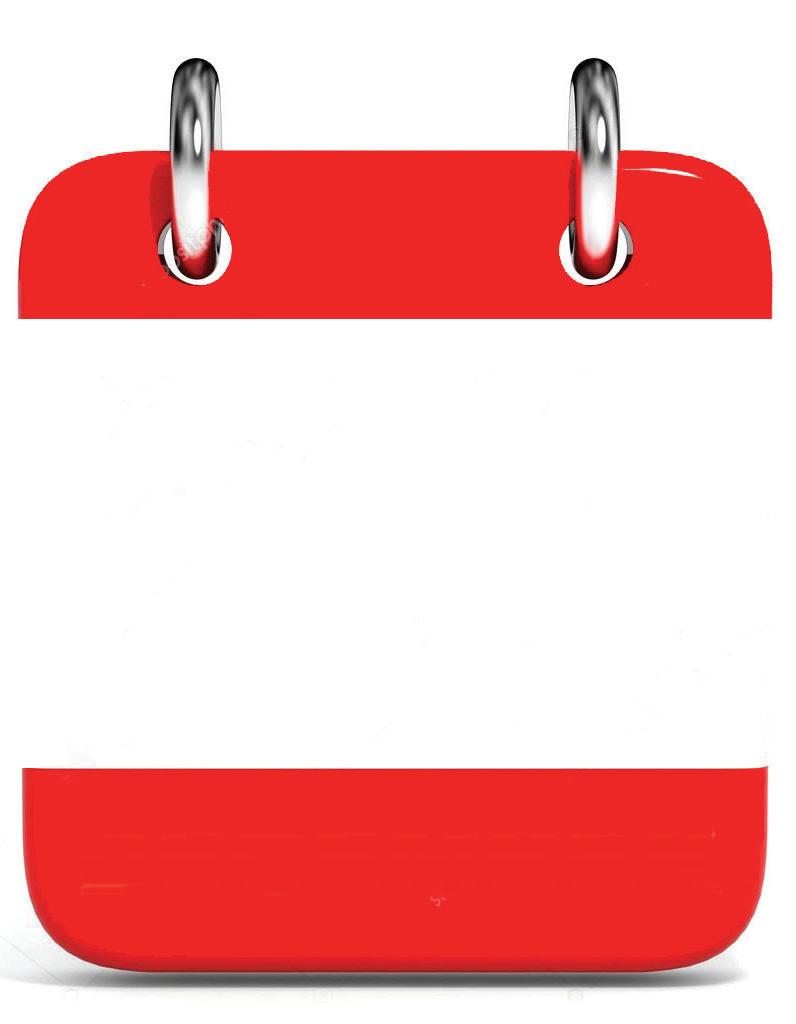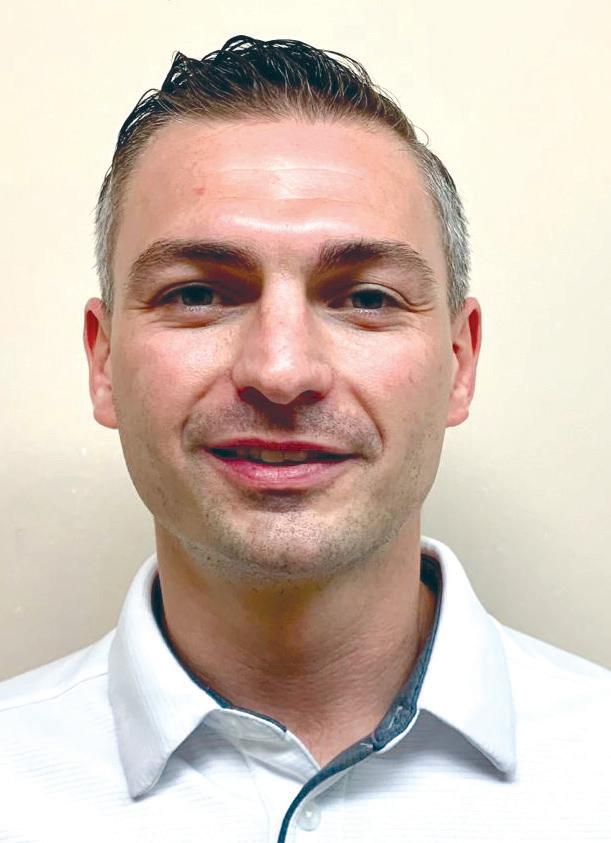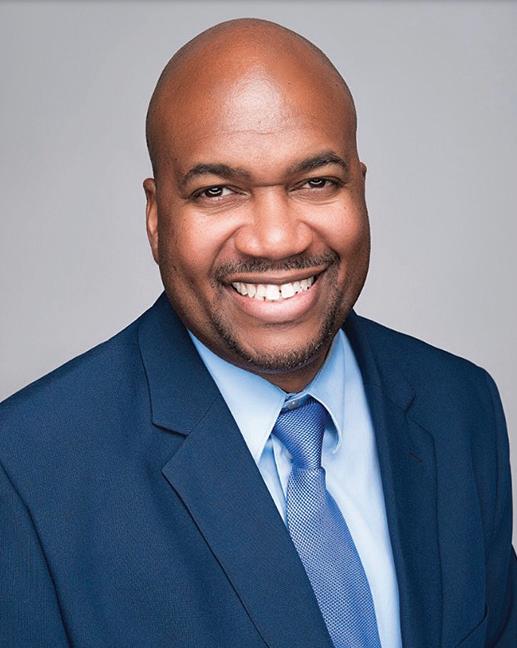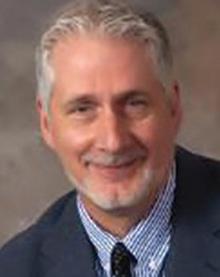
JUNE
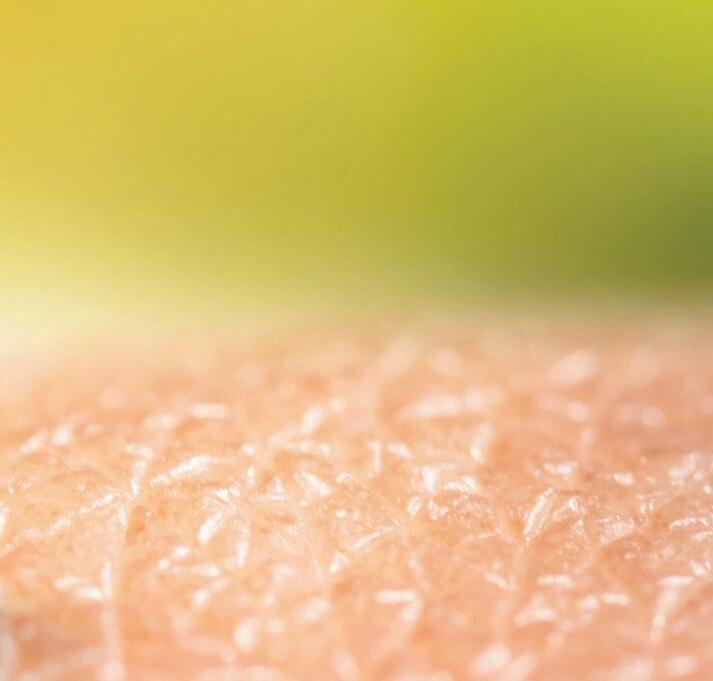




Humans may well be at the top of the food chain, but that doesn’t mean we aren’t part of the food chain of other creatures. How dare they. These brazen challengers are especially active at certain times of the year. Like right now. Coincidentally, we’re outside in their environment more this time of year too.
Let’s examine a few of these critters and see what we need to do to maintain our position of food chain supremacy.

These bad boys can do a serious number on people who cross their paths. And by serious, we mean up to and including death, although that is a very rare complication and is generally associated with a pre-existing allergy. The best strategy when it comes to fire ants is avoidance. It may be tempting to torment these tormentors by poking their mound, but it’s better to give them a wide berth at all times. If they do bite, briskly brush them off, because otherwise they clamp themselves onto victims and keep injecting venom. The worst pain will subside in ten minutes or so, but the itch will stick around for days, and so will the pimple-like pustules. Try to avoid the temptation to pop them, which


elevates the risk of infection. Right after the bites, apply an ice pack or cold compress for about 20 minutes, then 20 minutes off and 20 minutes on again. Going forward, hydrocortisone or calamine lotion will help alleviate the itchiness.
Kids, ticks were around long before TikTok. There is no connection between the two. One is a blood-sucking parasite and the other is... you know what, let’s not get into all that right now.
alcohol or soap and water and dispose of the tick. Remember, the only good tick is a dead tick.
Wasps and bees
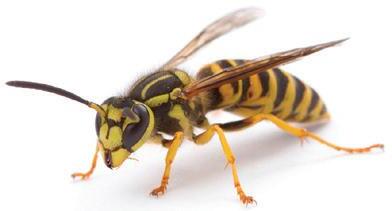

The image shows a Lone Star tick, ironically the most common type in Georgia. As the Georgia Department of Public Health puts it, “Georgians are particularly susceptible to tickborne Rocky Mountain Spotted Fever,” which can lead to headaches, nausea, and fatigue. Ticks also carry Lyme disease, which can affect the heart and nervous system.
The good news is that, depending on the type of tick, it takes from 4 hours up to 24 hours attached to your skin before they can transmit any disease. So after being outdoors, check your body and clothing and pets for ticks along for the ride. If you find one attached, carefully remove it with tweezers by pulling straight upward. Don’t jerk or twist the tick. Then clean the area with rubbing

Nobody enjoys being stung by bees or wasps, but for some people it can be a life-threatening event. Generally speaking, neither bees nor wasps are particularly interested in mixing it up with humans, but if they feel threatened by our presence (or the presence of our lawn mower or leaf blower), they use their stingers to defend themselves. Wasp nests are often easy to spot hanging from eaves or other protected places. If you see one, knock it down to encourage them to relocate. (And be prepared to relocate yourself too.) Beehives are often not as easy to locate, but if there is a colony or suspected colony in your yard that’s causing problems, their immense value to the environment as pollinators suggests a good response would be to call someone to relocate them.
Anyone who knows they have an allergy to bee, wasp, or fire ant stings should have an EpiPen and never go anywhere without it



Your child is not doing well in school. It’s the end of the school year and you received a note from the school recently indicating that your child is a candidate for being held back. The homework she brings home always appears too difficult for her and she resists doing it. She prefers to watch tv or play on her tablet. Your other two children struggle in school as well. What should you do?
A. Kids aren’t supposed to like doing homework. She’ll get over it. Don’t allow her to be held back.
B. Set up a meeting with your child’s teacher right away. Find out exactly why she thinks your child is doing poorly.
C. This is a clear indication that she may have ADHD. Set up an appointment with your child’s pediatrician soon.
D. Let her move on to the next grade and enroll her in after-school tutoring that the school has offered.
If you answered:
A. Kids are not born not liking homework and learning! It’s the parent’s role to make doing homework a routine part of the child’s day before she earns the privilege of doing other things she likes to do. This problem should not be ignored.
B. This should have been done earlier in the school year as soon as you saw problems with your child’s learning and motivation. It needs to be done immediately so you can get the teacher’s expert opinion about why your child is not performing well. This will determine your next steps.
C. You’re not ready to take this step until you have explored other causes for the problem.
D. If she is not doing grade-level work, moving her on to the next grade only will lead to more frustration and more dislike for school. Repeating the grade might be a good decision, while implementing other strategies to help her be more successful.
There are many possible causes for children not doing well in school. They can be broadly categorized as environmental, hereditary, and biological. In the first category are the things you do at home to make learning important: being a good role model, limiting distractions, providing good structure at home, being sure your child is getting enough sleep, is eating healthy foods, and is getting exercise. The second category is a controversial one. If parents did poorly in school, does it mean that their child is likely to do poorly in school? Most scientists and educators would say no. Providing a positive learning environment can make a big difference. Finally, the third category includes health and medical factors that can interfere with learning. This includes sensory deficits (vision and hearing), ADHD, autism, and other disorders.
The message here is that you have to keep track of your children’s work from the start of each school year (for instance, check their bookbag regularly), talk with your children about what went on in school during the day, meet with the teacher if you have concerns about progress, then move forward with making changes at home, setting up extra support at school, and talking with your pediatrician if there is evidence of a biological cause for learning problems. Dr. Umansky has a child behavioral health practice in Augusta.

If only! Unfortunately, it’s usually the other way around as we fight a never-ending battle against ants, roaches, and everyone’s #1 bugaboo, mosquitoes. There are people who earn a handsome living from mosquitoes alone and the attempt to repel them, and just about everyone who doesn’t use professional assassins goes the amateur route. We’re not too sure anything really works, amateur or pro, but let’s look at a few of the alleged home remedies and various other buggy myths.
Bug zappers
We might not consider ourselves to be bug lovers, but insects are a vital component of our entire ecosystem. We mention this because bug zappers zap bugs indiscriminately. In one study conducted by the University of Notre Dame, only about 4% of the victims of a summer-long zapper experiment were mosquitoes. The majority of the zapees were considered beneficial insects, including many that prey on
mosquitoes. Also, in this and a second study, no significant difference in mosquito populations was found in yards with and without zappers.
Citronella candles
According to the American Mosquito Control Association, (AMCA) there is no scientific evidence that citronella candles repel mosquitoes.
Insect-repelling plants
Have you ever noticed that plants more or less just sit there? That’s a big part of why, despite popular opinion to the contrary, their role in mosquito control is limited. Citing the AMCA again as the authority, some plants contain essential oils which repel mosquitoes and other insects. However, the leaves need to be crushed or

One good-looking mosquito
burned to release the repellent.
Dryer sheets
This was a new one for us, but several sources list these as an effective repellent for mosquitoes. Apparently the trick is to carry a dryer sheet in your pocket or tuck one under your hat to make mosquitoes go bite your neighbor instead of you.
Researchers at the AMCA have found that dryer sheets do indeed repel certain species of gnats, but seem to have no effect on mosquitoes. So why does Aunt Nelly swear that dryer sheets work? Some people have a chemical signature that isn’t attractive to mosquitoes. (If so, don’t take it personally.)
Insect-repellent sprays
If you don’t like the smell of Brand A you’re not going to use it, so go with the one that smells best. They all work about the same anyway, right? Wrong.
Extensive testing has established what the best repellents are, and the list is pretty short. Heading the list is DEET, which has been in use for more than 70 years and has been used by billions of people. It’s safe and effective, despite any myths you may have heard to the contrary. Another product to look for on labels is picaridin (pronouned pi-CARE-uh-din). Two more CDC-tested and approved repellents include OLE (oil of lemon eucalyptus) and IR3535.
Ultra-sonic devices
Like silent dog whistles for mosquitoes, the BBC says there is no scientific evidence that such devices work. +



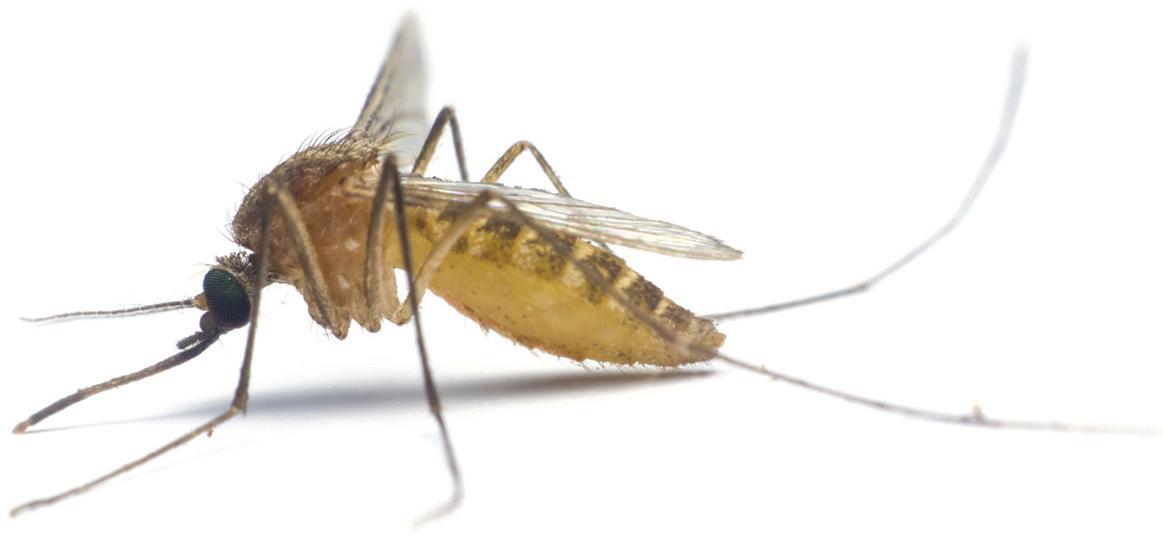
Last but certainly not least, mosquitoes are our deadliest predator. Over the centuries they have killed as many as 50 billion people, and their role in human death and disease isn’t exactly ancient history: the CDC was originally established (in 1946) as the Office of Malaria Control.
Prior to that, British Revolutionary War generals Cornwallis and Clinton blamed mosquitoes (specifically malaria) for the fact that only 35% of their troops were fit for battle against the colonists. In other words, some people say mosquitoes get the credit for America’s independence.
Speaking of these United States, a majority of us probably believe that mosquito-borne illnesses are not a big deal in this country; that’s a concern in various Third World locales around the globe.
Not so. A 2018 study by the CDC reported that cases of illness from mosquito, flea and tick bites in the US tripled between 2004 and 2016, and nine new germs spread by mosquitoes and ticks were discovered.
Avoiding mosquito bites is good based on the itch factor alone, so use bug sprays (see to the left and to the right). But if you hate such products, there is another proven strategy that literally blows mosquitoes away: if you’re sitting outside enjoying your porch, bring a fan with you. Mosquitoes are weak flyers and can’t handle even a light breeze.
First of all, thoughts and prayers, etc. It’s no fun to be a mosquito magnet. But what causes it, and is there anything that can be done to demagnetize such people?
To begin, let’s dispense with a myth or two. Some people think blood types are a factor. There is no scientific evidence to support that theory. Others say that taking vitamin B supplements will help keep mosquitoes away, while others claim that eating garlic does the trick. Again, these are assertions that scientists haven’t been able to verify in controlled studies. Mosquitoes in Italy might even prefer that people eat garlic, who knows?
What researchers have been able to establish conclusively is that mosquitoes track us down by means of scent, mainly from the carbon dioxide in our exhaled breaths, and also from body odor. Every single one of us has a unique scent that no one else on the planet has. If you don’t believe us, ask any bloodhound. The human scent in all its tremendous variety (including perfumes) is what attracts mosquitoes, and there’s not a whole lot we can do about it. Its components include genetics, diet, skin pH, and more.
The only recourse isn’t staying indoors 24/7. You miss out on too many beautiful things doing that. No, it’s using a good mosquito repellant. So the next time you’re going outside and you’re about to reach for Chanel No. 5, opt instead for something that includes DEET, picaridin, or lemon- eucalyptus oil. + +



We have all heard about cholesterol and its dangers. If we had a dollar for every time we heard or read that LDL is “bad” cholesterol and HDL is “good” cholesterol, somebody could probably put a nice down payment down on a house.
But suddenly there’s more. Have you heard any of the ubiquitous drug commercials on TV now using the acronym LDL-C? And every now and then there’s also LDL-P.
What does it all mean?
First of all, it might seem odd that there is no “C” in abbreviations for cholesterol readings. LDL? HDL? Shouldn’t there be a C in there, like HCL for High CHolesterol Level and LCL for Low?
To confuse matters further, we’ve been taught that when it comes to cholesterol readings, H doesn’t mean High as one might expect; H signifies “Healthy.”
In case anyone didn’t get the memos, HDL stands for high-density lipoproteins, the so-called good cholesterol. LDL is the abbreviation for low-density lipoproteins. LDL is considered unhealthy because it contributes to the buildup of cholesterol in arteries. Cholesterol is a waxy substance that we need, but only in limited quantities. Excessive amounts can block arteries and result in cardiovascular disease.
As vital a health measurement as cholesterol is, doctors have over the years improved their methods of testing for it. At one time it was a single reading; then the differentiation of HDL and LDL measurements came along. More recently, researchers have refined the testing process even further, leading to the new acronyms you may have heard.
LDL-C may seem a bit redundant: it measures the concentration of cholesterol in LDL particles in the bloodstream. Those particles are where “LDL-P” enters the picture. Some researchers believe the number of circulating LDL particles is a more accurate predictor of cardiovascular disease than the LDL cholesterol reading alone. If two people have identical LDL cholesterol readings but one person has higher LDL particle levels, that’s the person to be more concerned about.
Stay tuned for further research. +
www.AugustaRx.com
Direct editorial and advertising inquiries to: Daniel R. Pearson, Publisher & Editor E-mail: Dan@AugustaRx.com
AUGUSTA MEDiCAL EXAMINER P.O. Box 397, Augusta, GA 30903-0397 (706) 860-5455
www.AugustaRx.com • E-mail: Dan@AugustaRX.com

www.Facebook.com/AugustaRX


In keeping with this issue’s cover story, the man above won the 1973 Nobel Prize in Medicine (or Physiology) for a truly amazing discovery about the lives of insects, bees in particular.
His name was Karl von Frisch, and he was born in 1886 in Austria, the son of a urologist. Karl studied at the University of Vienna, initially in the field of medicine, but he soon switched to the natural sciences and earned his doctorate in 1910. That same year he was hired as an assistant in the zoology department at the University of Munich, where by 1925 he headed the institution’s department of zoology.
All along, von Frisch studied honeybees. He had long wondered how bees communicate. How do foraging bees that find a rich source of pollen convey that information to the rest of the hive? The field of flowers could be 500 yards away or a mile or anywhere in between; they could be to the north, south, east, or west. How could a returning bee wordlessly communicate his find?
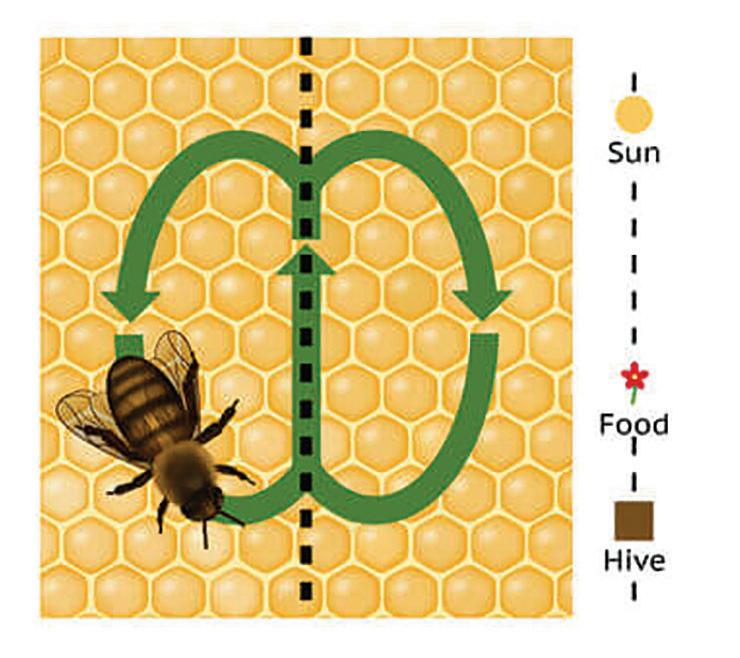

A clue is found in the title of von Frisch’s 1927 book The Dancing Bees. No doubt through patient and painstaking observation, von Frisch discovered that bees do what he called a “waggle dance.”
As depicted in the first picture (above left) if the source of flowers just happened to be directly toward the sun, the bee’s dance would be precisely straight up the comb inside the dark hive. If it was exactly opposite the sun’s position (middle picture), the dance would be straight down.

Of course, how often would those scenarios occur? 99% of the time a field of flowers would be off somewhere at an angle. Whatever the angle, it would be precisely replicated by the angle of the reporting bee’s dance (bottom picture).
What about distance? While bees were on the centerline between loops, they would do the waggle that gave the waggle dance its name. The number of waggles conveyed distance. Just a few waggles at precisely 18° left of a line straight at the sun meant a field was nearby in that direction; many waggles meant the pollen source was farther away
Although von Frisch was persecuted in Nazi Germany for being Jewish (his maternal grandmother was Jewish), he managed to survive World War II employed and relatively unscathed and ended his career at the University of Munich in 1958. He died in Bavaria in 1982 at age 95. +
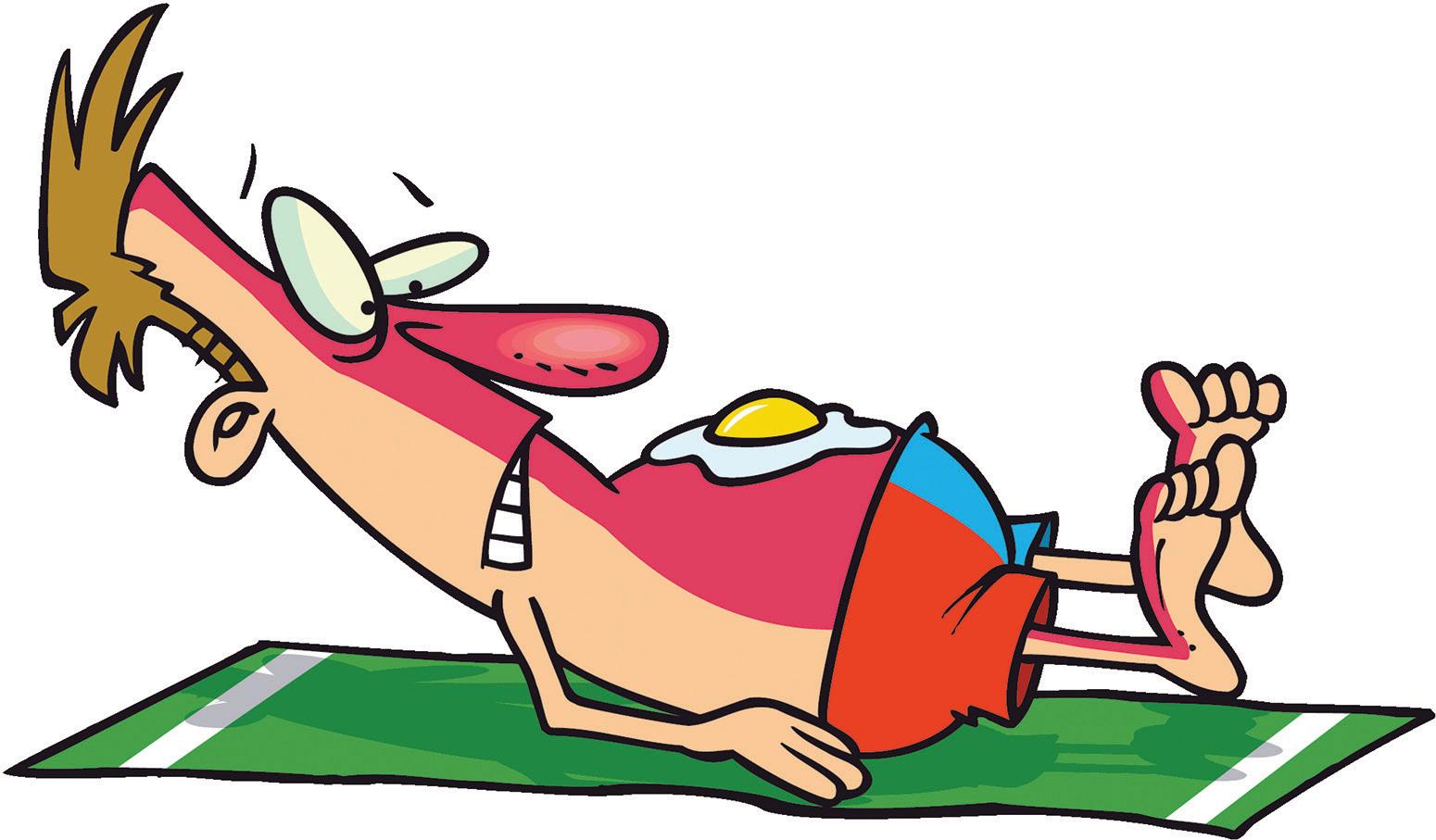
Don’t be this guy.
The beginning of June sees the school year in the past and lots of opportunities for fun in the sun in the future. But before you head outside, remember to apply and pack your sunscreen! Sun exposure is the number one cause of skin cancer, the most common cancer in the U.S. Choosing to use sunscreen can help you take action to reduce your risk for this mostly preventable cancer. If you’re wondering where to start with sunscreen, following the basics — choose it, use it, lose it — can help you protect your skin all year long.
CHOOSE IT
• SPF 30+- SPF, or sun protective factor, is a number that tells you how well a sunscreen protects you from sunburn. The American Academy of Dermatology recommends sunscreen with SPF 30 or higher.1 SPF 30 lets in 1/30 of ultraviolet (UV) rays, about 3%, which means it protects your skin from 97% of UV rays.1,2 No sunscreen is 100% protective, so consider wearing sun protective clothing and seeking shade when possible.1
• Broad spectrum- Broad spectrum means your skin is protected from ultraviolet A (UVA) and ultraviolet B (UVB) rays.1 Both types are naturally made by the sun and cause skin cancer.1
• Water resistant- No sunscreen is waterproof or sweatproof, but choosing a sunscreen that is water resistant protects your skin for longer periods of time during the hot months.1
• Apply 1 oz- Applying enough sunscreen is critical for preventing sunburn. For many adults, the standard recommendation is one ounce of sunscreen for your face, ears, neck, arms and legs.1,3 For a visual, one ounce of sunscreen is enough to fill a shot glass or the palm of your hand. Depending on the person and activity, you may need more sunscreen or less. The important thing is to cover all exposed skin!
• 15-20 minutes before- There are two main types of sunscreen: chemical and mineral. The main difference is chemical sunscreens protect your skin by absorbing UV rays instead of physically blocking them. This means it takes about 20 minutes for this type of sunscreen to absorb into your skin
so it can protect you from sunburn. Both types of sunscreen work and are safe to use. To read about the difference between the two, see link #4 in References.
• Reapply every 2 hours (and after swimming or sweating) - The ingredients in sunscreen that block UV rays break down when exposed to sun, so reapplying helps you stay protected.1 Water and sweat can also wash off sunscreen, and no sunscreen is water or sweat proof.
LOSE IT
• Expired!- Like many products, sunscreen expires. If you do not see an expiration date on your sunscreen, write the date you bought it on the bottle and throw it out after 3 years.1
• Heat warning- Store your sunscreen in a cool, dry area. Heat can break down the ingredients that block UV rays which makes the sunscreen ineffective.1 Throw out any sunscreen that has been stored in hot environments like attics, cars, or boats.
Sunscreen is a helpful tool for protecting yourself against skin cancer, but it’s not the only one. To learn about more ways to protect your skin, check out this resource from the American Academy of Dermatology Association. If you notice any change in your skin, get it checked out by a board-certified dermatologist. Skin cancer screening saves lives!
+
Cancer Information and Awareness https://www.augusta.edu/cancer/community/information-and-awareness
“The C Word” is a news brief of the Georgia Cancer Center at Augusta University. For cancer information visit our website. To request presentations or other resources, contact Nyree Riley at nriley@augusta. edu|706-721-8353 or Maryclaire Regan at mregan@ augusta.edu|706-721-4539 Virtual presentations can be arranged.
References:
1. https://www.aad.org/media/stats-sunscreen 2. https://bananaboat.ca/pages/what-spf-is-right-forme 3. https://www.hopkinsmedicine.org/health/wellness-and-prevention/sunscreen-and-your-morningroutine
4. https://www.mdanderson.org/cancerwise/is-mineral-sunscreen-better-than-chemical-sunscreen.h00159540534.html
Stress can kill you, my primary physician told me. A few weeks later, my therapist said, stress is killing you. I could go on and on with the list of people who have told me this. Right about now I’m imagining a movie montage where a trainload of people are telling me this, and that train is as long as one of those downtown Augusta trains that tries your patience to its breaking point and makes you late for your appointment where someone will tell you stress is killing you. This in turn, produces stress.
I’ve been hearing this for a while. My company even got a letter from my doctor once saying I needed six months of reduced stress. I thought this would be about as successful as a kid telling his parents that he needed an extra dose of cookies and candy every day, but to my surprise they did their best to accommodate me.

since they had learned to count on me? It was a sobering thought. What would happen when I died? Who would pick up the pieces? It would most likely fall on my wife and the thought of that woke me up.
I decided that I would take my therapist’s advice and I have been working on reducing my load. It won’t happen overnight, but I have to be kind to myself, my wife, and to those who count on me, not just for now, but for the long-term.
If you are one of the regular readers of this column, you are already aware of most of the causes of my stress over the past several years, but just to be clear, here is a summary: Raising grandchildren, dealing with multiple serious health problems, involuntary job changes, taking care of aging parents, deaths in the family, and all of the other aspects of life that tend to gang up on us.
Of course, I knew that stress isn’t good for you, but I perhaps hadn’t taken it as seriously as I should have. Sort of like when I didn’t take leaving the seat down seriously when I first got married. I was quickly corrected in that regard. And when it comes to my health, my aging body has been sending me warning signals about my poor choices for decades. Now the mortgage is coming due, and I am scrambling to figure out how to pay that health debt off, or at least stave it off for a little longer. I looked into how stress kills recently and learned a few things. Stress causes you to release the hormone adrenaline, which makes your heart race and your blood pressure rise. High blood pressure was one of the only health issues I didn’t have until a few years ago when a lot of the reasons for my stress ganged up on me all at once and took my lunch money.
So I asked my therapist how to reduce my stress. He said that I had to take some things off my plate. I replied that everything on my plate was an obligation and that I hadn’t chosen all of it. He then said something that really sunk in. He said that I needed to be kind, and not nice. He explained that I was being nice by taking on too much of the responsibilities of people around me, but I wasn’t being kind to myself at all and I wasn’t even being kind long-term to those who counted on me because the stress would kill me and then what would they do
Sometimes it isn’t even an activity you are doing, but something you are responsible for. Just putting someone else in charge of it can reduce your stress. Your mind won’t be preoccupied with it. You won’t wake up at night wondering how it will turn out.
Another way to handle stress doesn’t involve removing the thing causing the stress, but changing how you handle it. Your attitude about it can help. Here is an analogy: If you are afraid of something, like snakes, every time you see one your body will release adrenaline, your blood pressure will rise, and your heart will race. You can’t guarantee that you will never see a snake, so maybe learn how to not be afraid of snakes. How do you do that? I don’t know. Plus, this is just an analogy. If it was a perfect analogy, it wouldn’t be an analogy, but reality. If something causes you stress and you can’t eliminate that thing from your life, try to learn to cope with it. Get help from a therapist. Reduce your fight-or-flight response to it and learn to let it not affect you as badly. Of course, that is easier said than done, but it is possible.
I am on the parallel path of doing this now, along with clearing up my plate a little bit. At the moment, it looks like the plate you make at the family reunion where every square inch of the plate is covered and overflowing because if any of your aunts see that you didn’t get something they made, they will make you regret that slight forever. Even if that means getting duplicates. I am trying to make it look like those fancy plates at the gourmet restaurants that have a tiny bit of food in the middle and some fancy design drizzled on to the plate along with maybe some tiny garnish. It will take some time, but my life is worth the effort and yours is too.
P.S. Of course, I am still not doing a good job of making my actual plates have less on them. I will reserve that conversation for a future edition of this periodical.

J.B. Collum is a local novelist, humorist and columnist who wants to be Mark Twain when he grows up. He may be reached at johnbcollum@gmail.com
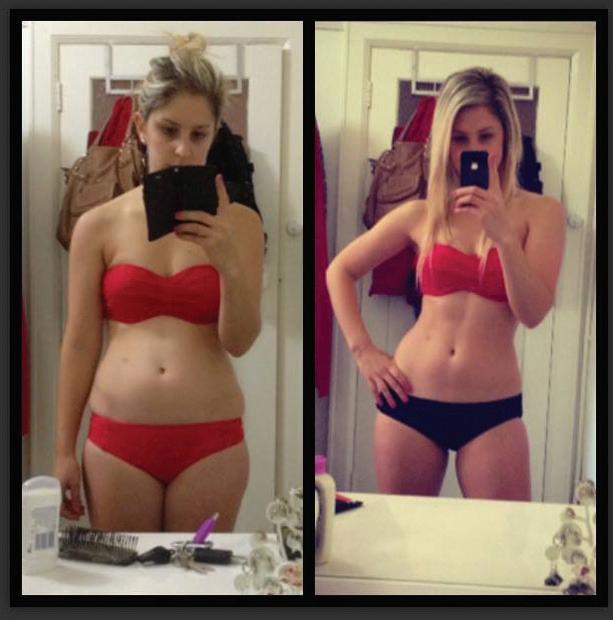
Ever wonder why you can’t get the results you’re looking for with diet and exercise programs? Why you’re always the before picture and never the after?
It’s no secret that “Before & After” pictures are often deliberately manipulated. The Before picture is as unflattering as possible, taken of an unsmiling subject bathed in harsh light without makeup. After pictures feature soft light, a smiling subject who has had a complete makeover, a flattering pose, and always the best outcome possible.
Let’s briefly examine our Before & After shots above. There is a minor wardrobe change between the two: the shorts in the Before picture were too small, plus she’s obviously not exactly sucking in her stomach, is she? By changing to a better fitting pair for the After shot, the flab spilling over the waistband goes away.
Her second pose separates her legs so that – voila! –her thighs no longer touch. The jutting hip accentuates curves that weren’t there before, and the hand-onthe-hip pose creates space where there was none before. The After hairstyle is simple and stylish, sending the subtle message that the slimmer figure is already beginning to transform her life. Overall, the After changes are definitely noticeable.
The two pictures above are not Photoshopped, and are the same woman in both pictures.
Oh, one more thing about these two pictures: they were taken 15 minutes apart. The model wanted to expose how easily Before & After shots can be manipulated.
So the next time you wonder why you can’t look like the model in an “After” photo.... maybe you already do and you just didn’t know it.
+





SOME PATIENTS YOU REMEMBER FOREVER I will never forget one 6-year-old boy who was rushed in with pneumonia. At the time was was also being treated for severe cancer with little success. He was a tiny scrap of flesh and bones, and looked like a starving one-year-old. I later nursed him on the ward and fell in love with him. He was so ill the only time he would eat was in the middle of the night because he thought he wasn’t allowed to! When I was transferred to another ward l didn’t want to know what happened to him because l was so sure he would have died.
Six years later l was in outpatients by accident one day and l saw his name. I noticed it because it was unusual. Then in walked this big strapping healthy boy, rugby mad and not a sign that he had ever had so much as a cough in his life. It was really wonderful. He was taller than average and nothing like the tiny dying child he had been. We don’t often see patients years later unless you work on outpatients, so it was fantastic to see him. I can’t forget him, and l always thought of him when l saw other children full of cancer. It gave me hope for them.


Garlic, tomatoes and pasta are a classic combination.
Toss in some spiralized broccoli stems with the pasta and you have a trendy updated classic.
Ingredients
• 8 ounces linguini
• 2 cups spiralized broccoli stalks (3-4 leftover broccoli stalks)
• 2 teaspoons extra-virgin olive oil
• 2 cups halved grape or cherry tomatoes (10.5 oz)
• 2 large cloves garlic, minced
• ¼ teaspoon salt
• ¼ teaspoon pepper
• 8 ounces fresh mozzarella cut into cubes (about 2 cups)
• ¼ cup thinly sliced fresh basil
Directions
Cook pasta and broccoli stalks according the directions on the pasta package (typically 9-12 minutes).



Meanwhile, add oil to a large non-stick skillet and heat over medium heat. Once hot, add the tomatoes and sauté for 2 minutes. Add the garlic, salt and pepper and sauté another minute. Place the cooked pasta and broccoli in a serving dish, add the tomato mixture and toss. Lastly add in the mozzarella and basil toss again and serve.
Yield: 4 Servings
Nutrition Breakdown: Calories: 420, Fat 16g (8g saturated fat), Cholesterol 40mg, Sodium 330mg, Carbohydrate 46g, Fiber 3g, Protein 19g Percent Daily Value: 20%
Vitamin A, 80% Vitamin C, 8% Iron, 35% Calcium
Carbohydrate Choice: 3 Carbohydrates
Diabetes Exchanges: 3 Starches, 1 Vegetable, 2 Medium fat meats, 1 Fat



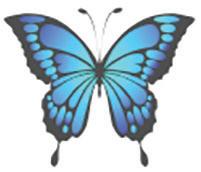

Sylvia, a Facebook friend from Augusta, asks:
“My daughter is a high school athlete. Her fellow athletes and coaches have advised her to take creatine supplements to boost performance. Is that safe? And does it actually lead to improved performance? ”
Thanks for the question, Sylvia. Recent surveys have shown that creatine use by adolescent athletes has skyrocketed, mostly among male athletes. One study found creatine use in children as young as 6th grade. About 44% of high school senior athletes report using creatine, which approaches the levels of college athletes. As you point out, high school coaches and peers are encouraging athletes to take creatine supplements.
There are many factors to consider about adolescent creatine use. Some questions that arise are: 1) What is creatine, in what forms does it exist, and is there scientific basis for its use by adolescent athletes? 2) Does creatine increase adolescent athletic performance and if so, in what activities and sports? 3) What are the recommendations for adolescent creatine use by the American Academy of Pediatrics? How do these recommendations compare to other worldwide recommendations? 4) Is creatine supplementation safe? 5) What type of quality control oversight exists for creatine supplements? 6) What behaviors, decision-making skills and lifestyle choices should parents and coaches encourage in adolescent athletes?
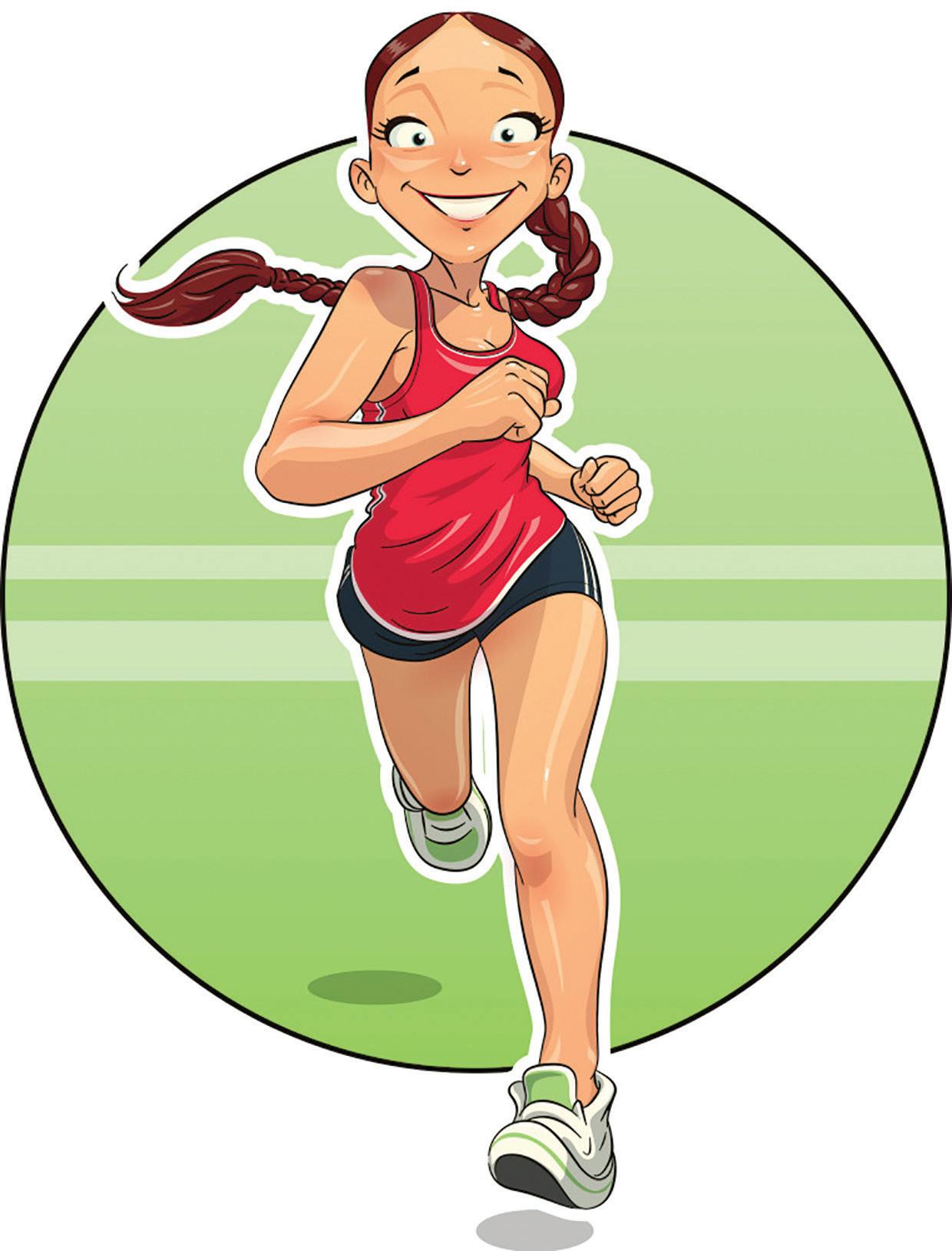
supervised training; b.) are consuming a well-balanced and performance enhancing diet; c.) are knowledgeable about appropriate use of creatine; and d.) do not exceed recommended dosages. There are no studies showing that creatine supplementation is safe, long term, for adolescent athletes. Creatine supplementation should not be a part of high school athletics.
It is important to mention that creatine is not essential to your diet. Your body can readily synthesize creatine from three common amino acids. Creatine synthesis occurs in the liver, kidneys, and pancreas. Creatine is then transported to muscles, converted there into creatine phosphate, a form of stored energy. Creatine phosphate can serve as a source of muscle energy in times of increased energy needs for muscle contraction. Besides being able to make our own creatine, creatine is also abundant in what we eat: red meat, seafood and dairy products. Since creatine is made in the body and found in foods too, you might be wondering what the thinking is behind taking creatine supplements. Athletes are constantly searching for that miracle “extra-boost” that will make them winners. The unproven idea is that taking extra creatine will overload your muscles with energy reserves for muscle contraction during athletic competition and lead to increased performance. If you think the present creatine fad is reminiscent of the “glycogen loading” fad among athletes that was so popular years ago, you are correct. Overdosing on carbs before athletic competition was thought to lead to increased glycogen stores in muscles and increased muscle energy reserves, which could be used during athletic competition. The resulting studies and data never found this to be true. The present creatine supplementation fad is likewise putting the horse before the cart. Shouldn’t
studies and data support the use of creatine supplementation by adolescent athletes before it is used? It is quite easy to sit in an armchair and hypothesize. That is daydreaming. The proof comes from controlled, double-blinded studies to get the data supporting (or not supporting) the idea. Presently, there is some scientific data suggesting that creatine supplementation may, under certain circumstances, result in increased levels of creatine in the muscles. There is one piece of critical information missing. Does this translate into increased athletic performance? Right now the scientific evidence is simply not there.
There is an extremely limited number of controlled studies on the effect of creatine on adolescent athletic performance. In adults, a small number of studies have concluded that “creatine improves an athlete’s response to short bouts of increased exertion and improves an athlete’s response in repeated efforts of maximal exertion.” In contrast to the science, there is an abundance of non-peer-reviewed popular articles extolling all the “potential” advantages of taking creatine supplements. Unfortunately, these popular stories are the main source of creatine information for coaches, parents and students.
Creatine supplementation may lead to a small increase in athletic performance among elite athletes in ultra-competitions (for example, elite professional soccer players). How does this apply to adolescent high school athletes? It doesn’t. The International Society of Sports Nutrition recommends that creatine supplementation only be considered for use by younger athletes who: a.) are involved in serious/competitive
The leading expert on adolescent health in the United States, the American Academy of Pediatrics, advises against creatine supplementation in adolescents. There are no long-term data on the consequences of adolescents taking this supplement. The National Collegiate Athletic Association prohibits schools from giving creatine to athletes; unfortunately, they also support a double-standard that does not prohibit the athletes from, themselves, supplementing with creatine. Right now, creatine supplementation, at recommended levels, appears to be safe in healthy adults. Side effects may include dizziness, nausea and vomiting, diarrhea and excessive sweating. Creatine supplements should not be used if you are pregnant, have kidney or liver disease, have diabetes, or have a bipolar disorder. At high doses, creatine can cause kidney damage. It can also turn off the body’s natural biochemical ability to synthesize creatine. Although the adult body’s ability to synthesize creatine can recover when high-dose creatine supplementation is halted, the long-term effects on an adolescent’s biochemistry is unknown. Creatine overloading is a particular concern in adolescent athletes. Studies have shown that this particularly non-compliant age group of athletes routinely exceeds recommended loading and maintenance doses of creatine.
When taken as a supplement, the usual form used is creatine monohydrate. The problem with all dietary supplements is that they are mostly “self-regulated” by the manufacturers. There is minimal oversight by either the USDA or FDA. Dietary supplements are in a category all by themselves, separate from foods or drugs. They escape the scientific rigors of evidence and testing. The creatine you purchase may or may not be pure creatine and may contain contaminants. Professional athletes need to be aware that some creatine supplements may contain contaminating steroids, banned by professional athletic organizations. In addition, studies of creatine supplements have shown that they may contain dicyandiamide, which breaks down to cyanide in the body. In 2021, the Canadian government recalled specific creatine supplements because they
Please see NO NONSENSE page 9
Have a question about food, diet or nutrition? Post or private message your question on Facebook (www.Facebook.com/AskDrKarp) or email your question to askdrkarp@gmail.com If your question is chosen for a column, your name will be changed to insure your privacy. Warren B. Karp, Ph.D., D.M.D., is Professor Emeritus at Augusta University. He has served as Director of the Nutrition Consult Service at the Dental College of Georgia and is past Vice Chair of the Columbia County Board of Health. You can find out more about Dr. Karp and the download site for the public domain eBook, Nutrition for Smarties, at www.wbkarp.com Dr. Karp obtains no funding for writing his columns, articles, or books, and has no financial or other interests in any food, book, nutrition product or company. His interest is only in providing freely available, evidenced-based, scientific nutrition knowledge and education. The information is for educational use only; it is not meant to be used to diagnose, manage or treat any patient or client. Although Dr. Karp is a Professor Emeritus at Augusta University, the views and opinions expressed here are his and his alone and do not reflect the views and opinions of Augusta University or anyone else.
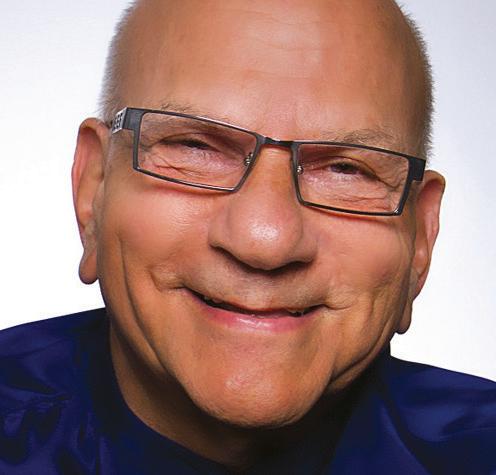
Dr. Karp
What goes around comes around. Trite, but true. Back when your neighbors had Covid, pretty soon you had Covid. It was in the news 24/7. Fauci said everyone should get vaccinated. Some did. Some didn’t. Politics and medicine became intertwined. The Covid virus killed thousands, but was eventually kind enough to gradually become less deadly and no longer a political driving force.
But what was the last nail in the Covid News Coffin? Do you recall when Biden’s administration gave everyone 4 free Covid tests? Go online, fill out a brief form and … bazinga! Four free tests arrived in the mail. Of course, they were not free. Taxpayers paid for the tests. Some company got a government contract to supply 400,000,000 tests (yes, that is how many the postal service was paid to deliver).
Almost instantly, Covid disappeared from the news. Covid still killed a few more people. But when was the last time you heard the word
“Covid” out of Washington or in the news media? Covid is not in the political narrative any more.
A medical practice group told me they no longer trust the Government-issued Covid test because not one of them ever produced a positive result. If that is true, does it mean the 400,000,000 tests bought and paid for by the government (meaning you) were designed to deliberately reduce positive tests, grinding the Covid epidemic to a halt? Is that part of the government propaganda plan? We will never know for sure.
Is that another piece of the confusion puzzle circulating in news? You do remember when Hunter Biden’s laptop was, according to the 51 intelligence agents cited by Biden in his speech, “Russian disinformation”? Well, now it turns out Hunter’s Laptop was real. The laptop will be used by the government against Hunter in his felony trial next week. However, we do not
from page 8
were contaminated with dangerous levels of Vitamin D. Another common contaminant in creatine supplements is creatinine; in one study, 44% of tested samples contained creatinine as a major contaminant.
What is the role of parents and coaches with regards to creatine supplementation in adolescents? High school is a place where students need to learn critical thinking skills. Educators need to help students learn to analyze, understand and use data for informed decision making. Modeling wishful thinking behavior for adolescents, encouraging them to take scientifically unsupported dietary supplements and ignoring the recommendations of the American Academy of Pediatrics, is not what coaches, teachers and parents should be doing.
need to know everything our government does. Our government does things in our long-term best interests in matters not suited for discussion around the company coffee pot or on cable TV.
Panicked minds are not good for national wellbeing, nor for individual sanity. Populations must be manageable. During World War II, we were not told the Japanese sent fire balloons into the Northwest with the intent of starting massive fires. The operation was insignificant. It was best that Joe Blow not know about his for a decade or so. Did our government mislead us? Yes. Was it for a good reason? Yes.
Years ago, school children were required to get small
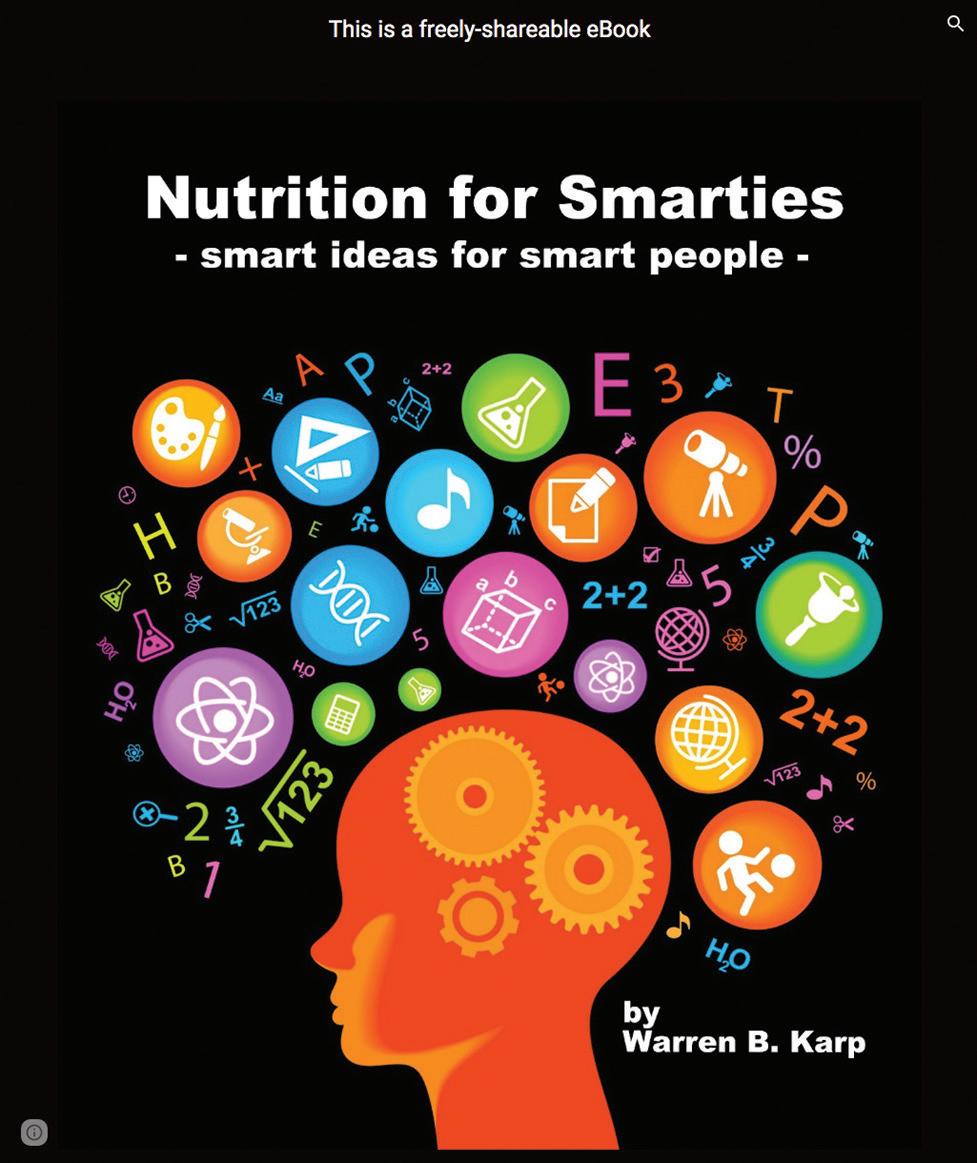
Do you love “No-Nonsense Nutrition”? Would you like to have a collection of more than 100 past columns you can download free and read anytime? Visit the Medical Examiner Facebook page: Facebook.com/AugustaRx +
What is the “No-Nonsense Nutrition” advice for today? Simply this: adolescent creatine supplementation is not supported by the American Academy of Pediatrics. Creatine supplementation has not been shown to have significant effects on the performance of high school athletes. What is known is that the focus on high school athletic performance ought to be on training, conditioning, maintaining hydration, getting enough healthy calories, and sufficient rest. “Wishful thinking” should not be a part of high school athletic training. Although creatine supplementation appears safe at levels recommended for adults, there are no long-term studies on adolescents. Creatine supplements are not subject to the quality control standards of drugs or foods, and may have varying levels of contaminants. Creatine use by high school adolescents should be discouraged.
pox vaccinations. Small pox virtually disappeared. Everyone was required to get polio vaccinations. Polio is a thing of the past. The government said do it, so we did it. It was a good thing. Many less people died.
If that happened today, people would march in the street with signs about government over-reach, tyranny, Nazism, and other dastardly intents.
Is our government infallible? Heavens, no. Our government (with good intent or otherwise) screws up from time to time. After all, this is the US and we have the right to be wrong and stupid sometimes. It is called freedom of choice. Some choices are right. Others, wrong. Most of them are not fully known for years or even decades later.
Another unknown is: Should people be indicted for paying for a confidentiality agreement? Detractors prefer the term “hush money.”
Sounds more ominous. It gets complicated herein.
Prominent Republicans
seem to get indicted in predominately Democratic areas. One day, it will surely be the other way around. Why? Because what goes around, comes around. The shoe gets on the other foot. Proponents and defendants will change directions like a ball in a pinball machine. That ain’t good. Unless you are a talk show host on radio or TV, that is. Then you have new material every day. Or so it would seem. Actually, it will be the same conflicts just reheated using different names.
What are we to do?
Remember and apply this: Yesterday is dead and gone. Tomorrow is forever coming on. Today is the only thing that is real. Learn from yesterday. Plan for tomorrow. But today is the only thing that is real.
View events impersonally. Society as a whole must prosper if you are to prosper. And always, d istinguish between what you think, what you believe, and what you know. The latter is the smallest of the three.



Not that anyone would want to. Write their own ticket, that is. But it will happen this summer all across Georgia.
The occasion is the annual Summer HEAT campaign carried out by law enforcement agencies statewide. As if it isn’t hot enough in the South this time of year, they add to it with their Highway Enforcement of Aggressive Traffic (H.E.A.T.) campaign each summer, coinciding with peak driving season from Memorial Day through Labor Day.
The concerted effort on Peach State roads is designed to reduce fatal crashes caused by a number of the most common crash culprits:
• Distracted Driving As everyone knows, using a cell phone while driving is a major distraction. Surely one of Georgia’s most-ignored traffic laws is the one that says it is illegal to so much as touch a cellular device while driving. The law states, “Drivers cannot have a phone in their hand or touching any part of their body while talking on their phone while driving” — hands-free, of course. Exceptions are limited, merely including things like reporting a crash, fire, crime, hazardous road conditions or other emergencies. Streaming music from a phone through your car’s speakers must be set up or started before hitting the road. Texting, whether sending or reading, is illegal.
• Impaired Driving Every single day of the years in the state of Georgia, someone unexpectedly dies due to an impaired driver. No one ever wakes up thinking, I’ll be killed by an impaired driver today. But it happens anyway to some 400 Georgians each year, and as tragic as that number is all by itself, it gets worse. For one thing, the DUI deaths in Georgia represent more than a quarter of all traffic fatalities. Even worse, only about 38 percent of the fatalities are people in the impaired driver’s vehicle. Most fatalities in such crash-
es are either in the other car with its unimpaired driver (54 percent) or involve non-motorists like pedestrians and bicycle riders (9 percent). No wonder cops and troopers are on the lookout for impaired driving big time. The solution: When drinking, utilize a ride-share service or a designated driver.
• Speeding and Aggressive Driving These categories cover a lot of ground. Speeding is self-explanatory, but aggressive driving includes a multitude of sins. Do you immediately think of the young punk with the souped up car and lead foot? Well, one definition of aggressive driving is running red lights. Our roving traffic spotters say the demographics of red-light runners include everybody from soccer moms to Sunday School teachers. It is an epidemic. According to the National Coalition for Safer Roads, one third of all Americans know someone who has been killed or injured in a red-light running crash. Other symptoms of the disease of aggressive driving include the aforementioned speeding, plus weaving through traffic using multiple lanes (usually due to speeding), and tailgating. Any one of these risky behaviors, especially when chronic, demonstrates immaturity, selfishness, recklessness, impatience, and are strong indicators of being unfit to drive. They endanger the aggressive driver as well as every other driver on the road and their passengers, not to mention pedestrians.
It’s fair to say that anyone who gets a traffic ticket during Georgia’s Summer HEAT campaign deserves what they get. They in effect write their own ticket, and hopefully the citation and all of its attendant costs is the worst thing that happens to them, not serious and debilitating injuries - or worseto themselves or others.
Keep your cool behind the wheel and you’ll easily avoid Summer HEAT.







—
posted by Neha Gour on July29, 2023 (edited for space)
Being a vegetarian can cure COVID-19. Birth control pills cause abortions. Eating ginger is 10,000 times more effective than chemotherapy at curing cancer. Those were just some health misinformation trends of the past year.
Health misinformation refers to health-related information that is false, unverified, and lacking scientific evidence. It poses a significant threat to public health, since it often leads to dangerous decisions based on false information. During the COVID-19 pandemic, health misinformation emerged as a global crisis, and its impact has only continued to grow at an alarming rate
Today, many people rely on new media technologies such as online encyclopedias, social media channels, and mobile health (mHealth) platforms for health-related information. While these platforms enable swift information exchange, their lack of accountability, ineffective gatekeeping, and inadequate content regulation contribute to the uncontrolled spread of health misinformation. Moreover, widespread health illiteracy, linguistic barriers, and gullible social media users who struggle to evaluate health information further facilitate the rampant dissemination of unverified, false, and anti-scientific health claims.
Another concerning aspect is the increasing role of social media influencers who promote their views on various platforms, spreading unverified, unscientific, and misleading health recommendations. In today’s digital age, a person’s perceived expertise is tied to the number of social media followers they have. But there is a hidden market that sells artificial social media followers in the form of bots and fake accounts, further deceiving the public and compromising the credibility, reliability, and accuracy of health information.
The increasing spread of health misinformation has detrimental consequences, including suboptimal preventive care, growing vaccine hesitancy, low medication adherence, poor patient-provider communication, and heightened risks of illness and death. In the post-pandemic era, it is important for the general public to develop both health literacy and digital literacy to effectively recognize, evaluate, and report health misinformation. For individuals who rely on new media for health information, the following recommendations are valuable:
Always check the primary source. The credibility of the information source is crucial in assessing its accuracy, reliability, and trustworthiness.
Look for professional qualifications. Verify the expertise of the person sharing health advice. Do they possess the necessary educational qualifications or certifications? Do they consistently share reliable health information?
Think critically. Adopt a critical approach to judge, question, and analyze health information rather than blindly accepting it. This mindset will help determine the authenticity and dependability of the information.
Be wary of conspiracies. Consider whether the information source or author has biases or prejudices. Personal agendas can lead to falsehood and deception.
Look for fact-checking websites. The World Health Organization, Centers for Disease Control and Prevention, the National Library of Medicine, and the National Institutes of Health are the most authentic websites to check for facts and reliable health information. In addition, websites like FlackCheck, SciCheck, and Snopes analyze misinformation and are also good sources to double-check health information before acting upon them or sharing it further with your loved ones.
Neha Gour is a graduate student +
The #1 word we hear from readers when they talk about the Medical Examiner is love. “We love your paper!” But don’t stop with loving just the Medical Examiner. Save some love for our awesome advertisers. Their support makes this free newspaper possible.

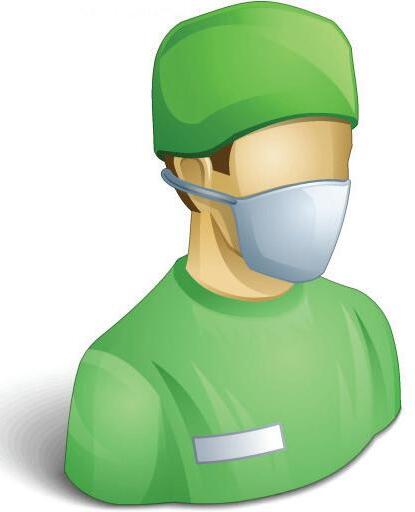
“Thanks for advertising in the Medical Examiner.”
“I was just looking at your ad in the Medical Examiner. Are you open on Saturdays?”
“I saw your ad in the Medical Examiner. I’m calling to ask if you carry....”
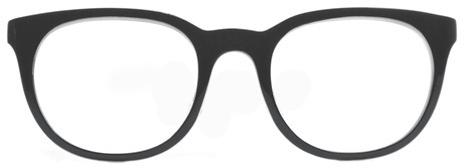


I really love being vegan.
What exactly is a vegan diet?

I heard a simple explanation: you don’t eat food from any creature with eyes.
So... no meat, no eggs, no milk or cheese, not even honey.

ACROSS 1. Picnic pests
5. Studies before a test
Trim
_________ County
16. Keep ____ on someone
17. Like some rains
19. Upon intro, sometimes 20. Type of surgery
21. Drunkard
22. Partner of Wynken and Blynken
23. Temporary fracture care
26. Straighten
29. Squander
32. Wreath of flowers
33. David Bowie hit
34. Late Augusta historian Ed
35. Unit of energy
36. Employee benefit prog.
37. Peach companion?
38. Churchill sign
39. Gone by
40. LA team
41. Inheritor
42. Gun 43. 03
44. _______ off; deflects or avoids
45. Lower canal or river bed
47. ____-invasive
48. Mr. Floyd
49. Lower class
55. Leave out
57. Prepared, cooked, or served with spinach
58. Medicinal amount
59. Finished
60. High school woe
61. Exclamations of content
62. Relaxes
63. First or second ______
by Dan PearsonThat’s correct. If it has eyes... What about potatoes?

Simply unscramble the letters, then begin exploring our ads When you find the correctly spelled word HIDDEN in one of our ads — enter at AugustaRx.com
We’ll announce the winner in our next issue!
X A M I N E R S U D O K U
DIRECTIONS: Every line, vertical and horizontal, and all nine 9-square boxes must each contain the numbers 1 though 9. Solution on page 14.
1. Oxidant beginning 2. _____ sign
3. Waterproof canvas
4. Odd
5. Member of the dog family
6. Religious practice
7. Related by blood
8. Flesh 9. Long-running NBC show 10. Sample lead-in
11. Projecting construction
12. Primary survey letters
13. Breast cancer check (abbrev.)
18. Elite English school 21. Consume 23. Agitates 24. Satellite of Neptune
25. Detroit team
26. Fear in country slang?
27. Encampment encircled by wagons or armored vehicles
28. Make poor 29. Crazy
Gray 31. Type of holder?
Fad 37. Study suffix 41. Merchandise label 44. Damaged by much use 46. Palm fruits 47. Must have
Arm bone 50. Starts to drift off
Endure, suffer (poetic)
Augusta painter Ed
______ Karenina
______ Crossing (road sign)
Room within a harem
Extinct flightless bird
Sum charged

DIRECTIONS: Recreate a timeless nugget of wisdom by using the letters in each vertical column to fill the boxes above them. Once any letter is used, cross it out in the lower half of the puzzle. Letters may be used only once. Black squares indicate spaces between words, and words may extend onto a second line.
Solution on page 14.
Use the letters provided at bottom to create words to solve the puzzle above. All the listed letters following #1 are the first letters of the various words; the letters following #2 are the second letters of each word, and so on. Try solving words with letter clues or numbers with minimal choices listed. A sample is shown. Solution on page 14.

ha... ha...

n attorney representing a wealthy art collector called his client and said to him, “Charlie, I have some good news and I have some bad news.” The art collector replied, “I’ve had an awful day; let’s hear the good news first.” The attorney said, “Well, I met with your wife today, and she informed me that she invested $5,000 in two pictures that she thinks are worth a minimum of $15-20 million. I think she could be right.”
Charlie replied enthusiastically, “Well done! My wife is a brilliant businesswoman! You’ve just made my day. That is great! I can handle the bad news now. What is it?”
The attorney replied, “The two pictures are of you with your secretary.”
A man was walking through a casino when he noticed three men and a dog playing poker at one of the tables.
“That’s a pretty smart dog you’ve got there,” said the man.
“Not really,” said one of the card players. “Every time he gets a good card he wags his tail.”
Moe: How are you doing, Joe? You look better. Joe: I am. I’ve turned my life completely around.
Moe: How did you do it?
Joe: Remember how I was always miserable and depressed?
Moe: Yeah...
Joe: Well now I am depressed and miserable.
Moe: Seems like every time I do laundry I lose one sock. How is that possible???
Joe: Maybe it’s because if you lost two socks you would never notice?
Moe: Sometimes you talk about your Uncle Fred and his massive fortune. How did he get so rich anyway?
Joe: He was a trophy salesman.
Moe: That doesn’t exactly sound like the path to wealth. How did he do it?
Joe: He invented the participation trophy.
A young pastor is called in to his superior’s office for a serious talk.
“Members of your congregation have accused you of blasphemy in the closing remarks you made after your sermon last Sunday. Do you have an explanation?”
After thinking for a moment, the pastor recalled, “I did mention how a member of the congregation who has been sick is doing now. I think that’s when people got upset.”
“Exactly what did you say?” asked the senior pastor.
“If I recall correctly, I said, ‘God is good. Brother Wilson is better.’”
Staring at my phone all day has certainly had no Effect on ME!
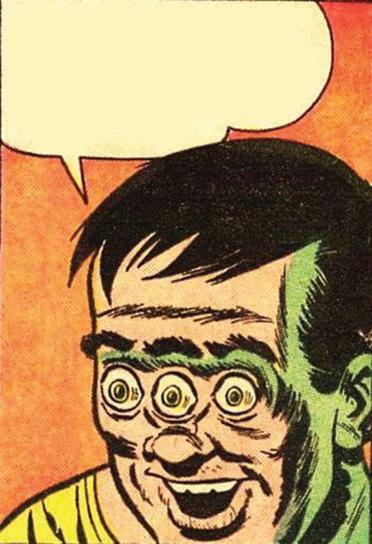
By popular demand we’re making at-cost subscriptions available for the convenience of our readers. If you live beyond the Aiken-Augusta area, or miss issues between doctor’s appointments — don’t you hate it when that happens? — we’ll command your mail carrier to bring every issue to your house!
NAME
ADDRESS
CITY STATE ZIP
Choose six months for $24 or one year for $42 . Mail this completed form with payment to Augusta Medical Examiner, PO Box 397, Augusta GA 30903- 0397
Dear Advice Doctor,


I have a very simple question: what causes weepy eye? And what can be done to stop it? This has been going on in my one eye for months.
— Buying Kleenex by the Case Dear Buying,
I’m very glad you reached out for help in this important matter. And I want to reassure you that grief is a completely normal process that everyone goes through. It does not occur on a predictable timetable. It is unique to each and every person, so there is no “right” or “wrong” way to grieve. The process can go through multiple phases of getting “better,” then getting “worse.” Grief can spring from the usual causes — the death of a parent, sibling, spouse, or child —but also from unexpected sources like the loss of a job, a house, a pet, or even a possession to which we have a strong emotional attachment. Losses like these can often result from divorce.
Whatever the cause, grief rarely follows the 5 stages that are often listed in articles about grief: denial, anger, bargaining, depression, and acceptance. Many, if not most people, will not progress through them. Grief is “highly individualized and unpredictable,” observes Psychology Today magazine.
Because of that, experts in grieving suggest withholding judgment that a friend or loved one is grieving longer than we happen to think is appropriate. Conversely, some people are viewed by friends and family as not being sad enough or grieving long enough. The course of grief is navigated differently by each person. Like physical healing, it has to occur naturally and can’t be rushed. Psychology Today, it is generally unhelpful to encourage the pursuit of “closure.”
The best way to support someone through the process is to listen, ask questions, share memories, and offer practical help.
In situations of prolonged and unhealthy grief — lasting more than a year, marked by denial or disbelief concerning the death, causing intense insomnia, depression, loneliness and/or isolation, sparking comments that life is meaningless, and significantly interfering with daily living — reach out to get help from your primary care provider, spiritual advisor or trusted friend. Help is available to return to life again.
I hope this answers your question. Thanks for writing!
Do you have a question for The Advice Doctor about health, life, love, personal relationships, career, raising children, or any other important topic? Send it to News@AugustaRx.com. Replies will be provided only in the Examiner.
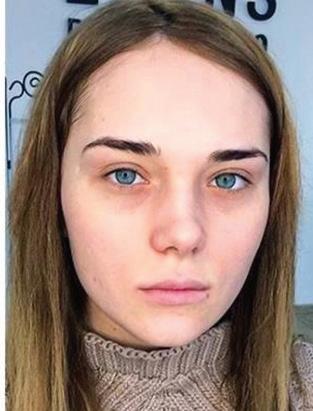

The
...cleverly hidden on the pillow in the p. 2 ad for AUGUSTA VASCULAR ASSOCIATES
THE WINNER: EDWARD SMITH!
If that’s your name, congratulations! Send us your mailing address using the email address in the box on page 3. The new Mystery Word is on page 12. Start looking!
...wherein we hide (with fiendish cleverness) a simple word. All you have to do is unscramble the word (found on page 12), then find it concealed within one of our ads. Click in to the contest link at www.AugustaRx.com and enter. If we pick you in our random drawing of correct entries, you’ll score our goodie package!
SEVEN SIMPLE RULES: 1. Unscramble and find the designated word hidden within one of the ads in this issue. 2. Visit the Reader Contests page at www.AugustaRx.com. 3. Tell us what you found and where you found it. 4. If you’re right and you’re the one we pick at random, you win. (Winners within the past six months are ineligible.) 5. Prizes awarded to winners may vary from issue to issue. Limited sizes are available for shirt prize. 6. A photo ID may be required to claim some prizes. 7. Other entrants may win a lesser prize at the sole discretion of the publisher. 8. Deadline to enter is shown on page 12.

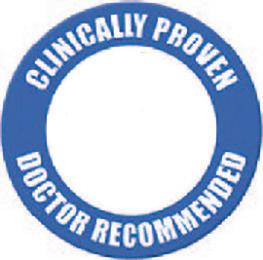

Dr. Eric Sherrell, DACM, LAC
Augusta Acupuncture Clinic 4141 Columbia Road
706-888-0707 www.AcuClinicGA.com
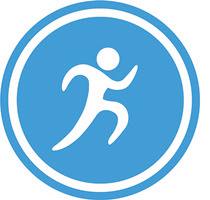
Evans Chiropractic Health Center Dr. William M.
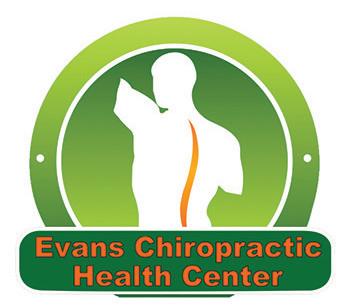

Wheeler Rd, Suite 365
30909 706-432-6866 www.visitrcp.com
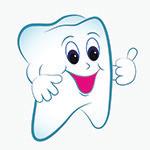




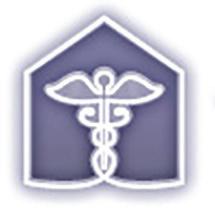
Karen L. Carter, MD 1303 D’Antignac St, Suite 2100 Augusta 30901 706-396-0600 www.augustadevelopmentalspecialists.com




